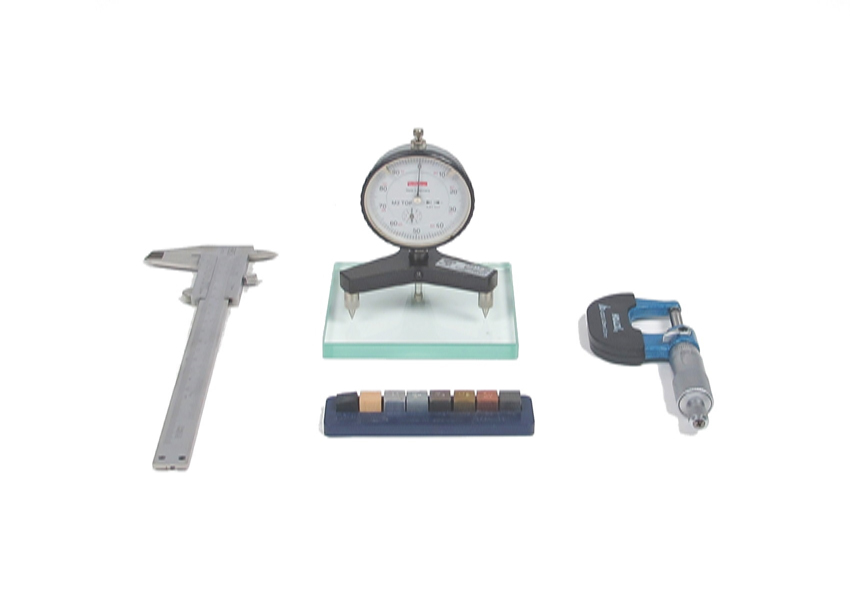Basic measurement techniques

Principle
Caliper gauges, micrometers and spherometers are used for the accurate measurement of lengths, thicknesses, diameters and curvatures. Measuring procedures, accuracy of measurement and reading accuracy are demonstrated.
- Foundation of every practical sciences lab course
- Aquire the skills to measure basic mechanical variables
- Realise the limits of measuring accuracy
- Combine different measurements to determine a quantity of interest
- Determine curvatures using the spherometer
Glass plate, 100 mm x 85 mm x approx. 1 mm
Watch glass, dia.80mm
Watch glass, dia.100 mm
Watch glass, dia.125 mm
Glass tube, straight, l=80 mm, 10/pkg.
Glass tube, do=24 mm, di=21 mm, l=120 mm
Cubes, set of 8
Vernier calliper stainless steel 0-160 mm, 1/20
Micrometer screw gauge 0 – 25 mm
Spherometer
Iron wire, d = 1.0 mm, l = 10 m
Aluminium foil, set of 2 sheet
- Determination of the volume of tubes with the caliper gauge.
- Determination of the thickness of wires, cubes and plates with the micrometer.
- Determination of the thickness of plates and the radius of curvature of watch glasses with the spherometer.
What you can learn about
- Length
- Diameter
- Inside diameter thickness
- Curvature
- Vernier
